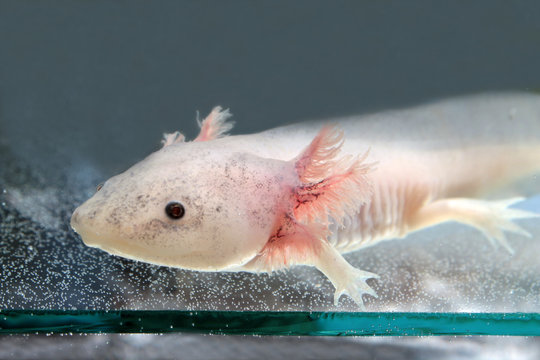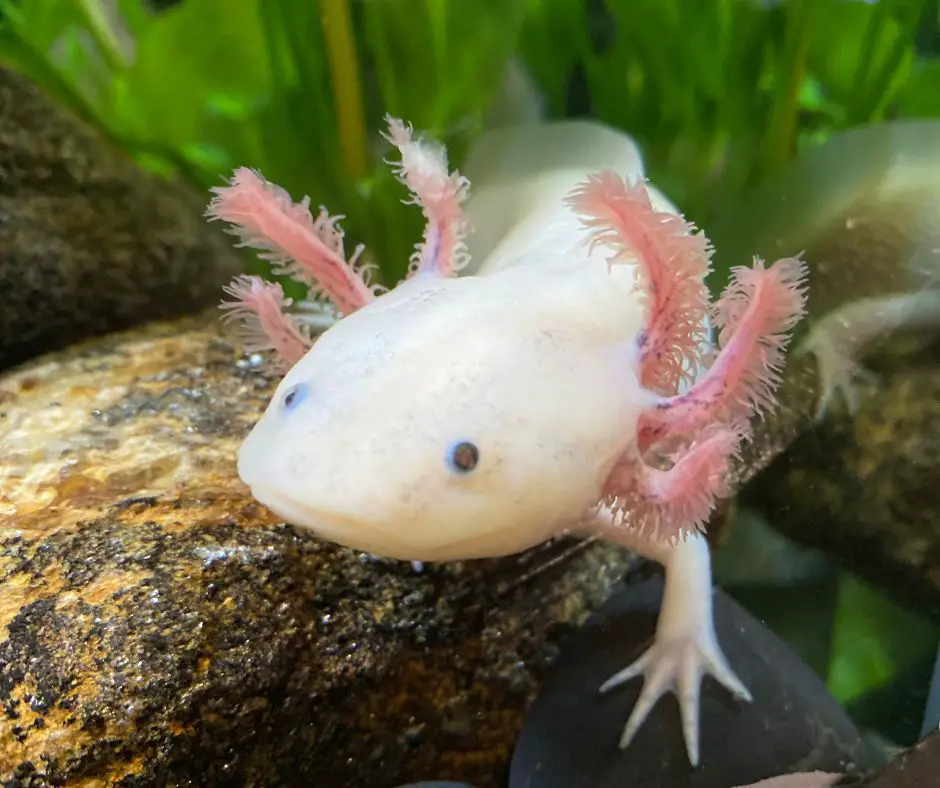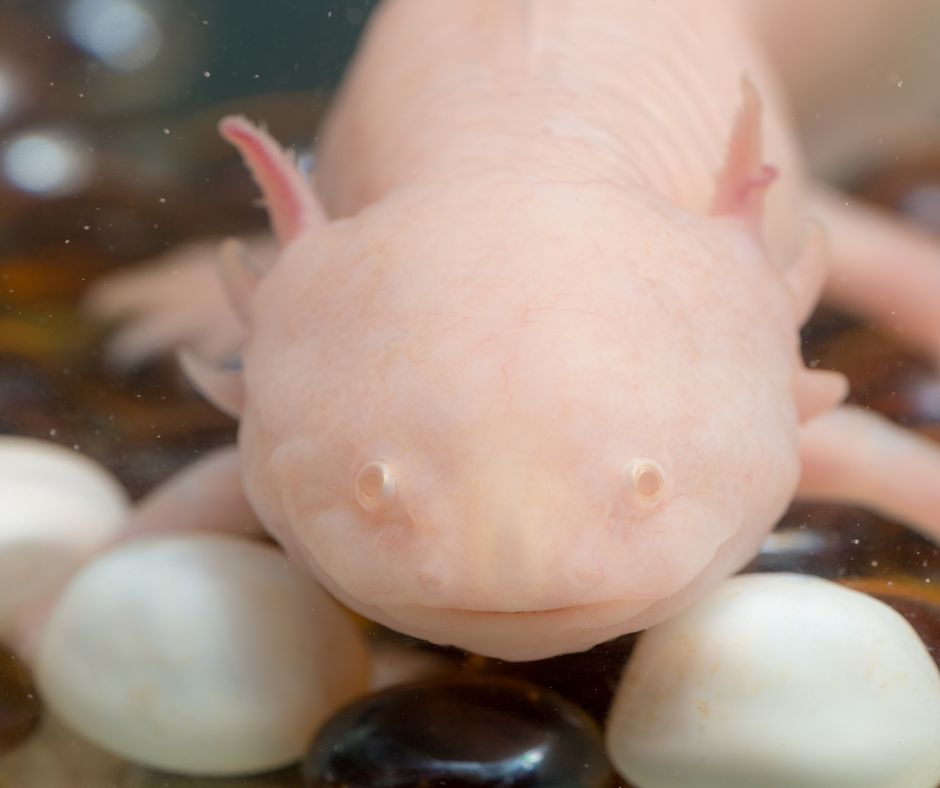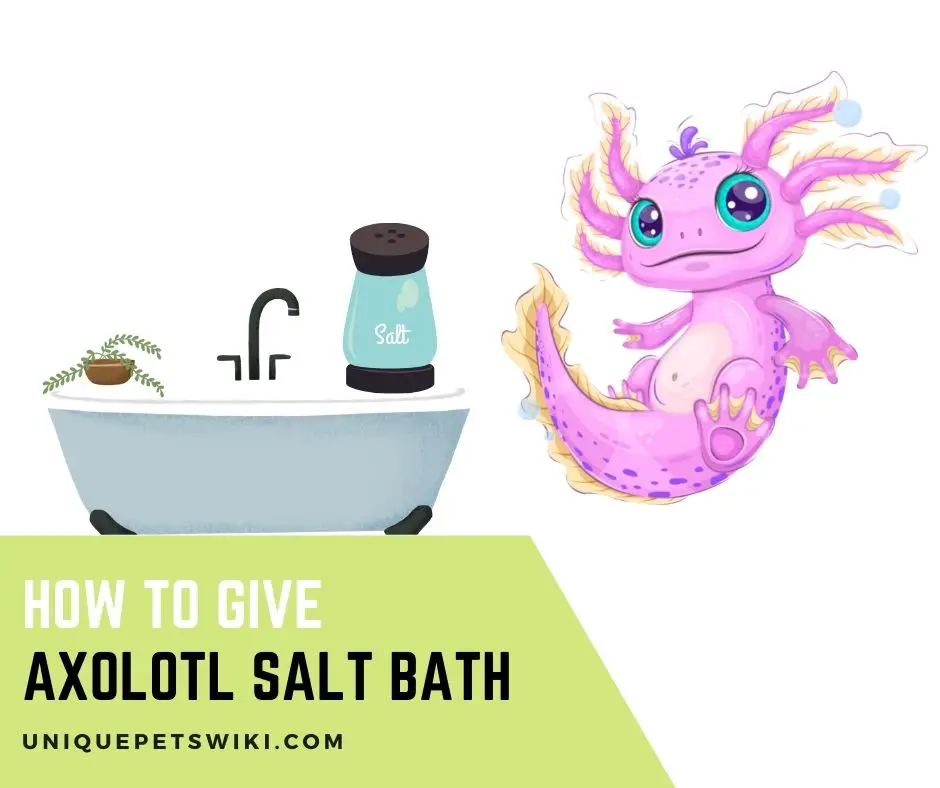A salt bath is an excellent method of treating axolotls with fungal or bacterial illnesses. The ailment manifests itself on your amphibian pet’s skin as white cotton patches, which are frequently noticed on an injury.
As a person who owns an axolotl or axolotls, it is natural for you to question these weird phenomena on your body and conduct internet searches.
There are detailed instructions on how to give your axolotl a salt bath on this blog. Axolotl salt baths are often a source of confusion, therefore we’ll address the most common concerns, such as safety, salt type, frequency of administration, and precautions.
Contents
Are Salt Baths Safe for Axolotls?

Yes, Salt baths are safe for Axolotls as long as they are correctly performed. Salt baths are used to cure axolotls with skin problems such as fungal infections. Signs of a fungus appear as puffy, cotton-like clumps on the axolotl’s skin, most commonly the gills or the site of a cut.
Gill fungus can also cause whiteness and cloudiness at the tips of the gill stalks, as well as degeneration of the gill filaments, a condition known as tissue necrosis. If you notice these signs, you should give your Axolotl Salt Baths.
The critical points to keep in mind are, first and foremost, avoiding excessive salt use. Secondly, avoid allowing the axolotl to remain in the water for an extended period of time. Thus, It’s bad for an axolotl to stay in the salt bath for a long time or if one uses too much salt.
Non-iodized salt is required for an axolotl salt bath. Your axolotl may be harmed if you use salt that has been iodized. So, you’ll need sea salt, aquarium salt, or rock salt to get the job done.
In order to give a salt bath to an axolotl, you’ll need about 2-3 teaspoons of salt per liter of water.
How To Give Axolotl Salt Bath
If you have multiple axolotls, the first step is to isolate the sick one from the others. This will protect your fellow axolotls from infection by the fungus. After that, you must build a salt bath with the appropriate amount of salt and temperature.
After you’ve soaked your pet in the tub, it’s time to rinse them. At this stage, the salt bath solution should be withdrawn from your axolotl.

Step 1: Quarantine of Your Sick Axolotl
The first step is to prevent disease spread. The sick Axolotl is separated from the rest of the herd. If the infection spreads, additional axolotls may require tea bath treatment. Additionally, have a tub for washing treated axolotls and a separate tub for healthy ones.
Step 2: Prepare Salt Bath
Before beginning your salt bath, fill a 1- or 2-liter tank with clean, chlorine-free water. Add 2 or 3 tablespoons aquarium or sea salt, or similar non-iodized, safe salt, to each liter of water. Perfection in dissolution requires the complete mixing of salt and water.
If too much salt is not dissolved, the axolotl’s skin will become scorched, leading it to fear and flee. If you notice an excessive amount of salt in the salt bathing solution, remove the Axotol from the container and set it in another.
Then, replenish the salt bath with fresh, clean water and mix until the salt is completely dissolved. Axolotls prefer water with a temperature range of 16 to 18 degrees Celsius.
Generally speaking, the temperature of the salt bath should be the same as the temperature you maintained in the tank or in the refrigerator prior to using it.
Step 3: Transfer Your Axolotl into the Tub Salt Bath

Transfer the aquatic pet from its refrigerated container into the salt bathing solution that has been prepared.
Axolotls can be softly and safely handled in two different methods. You have the option of using your hands or a net to accomplish this task. Keep your hands clean and be careful because they’re prone to falling over when you use them.
An axolotl’s new swimming home should feature a lid in order to keep it from escaping and freaking out. You can use a timer to keep your pet amphibian in the salt bath for around 13 minutes.
Over time, salt bathing with your axolotl can cause it to shed and perhaps have its gills harmed. For a few days, take a salt bath every 12 hours. As the infection subsides, you should cut back on the number of baths you give your pet.
Once a few days have passed with no improvement, give the pet a day off and resume the bathing process. Instead of continuing with the salt bathing for one or two weeks, take the case to a skilled veterinarian. Axolotls are harmed physically by longer bathing.
Step 4: Remove Your Axolotl from the Salt Bath Solution
Remove the aquatic pet from the treatment solution and place it in a fresh container when the 13-minute bathing period has ended. To get rid of any salt residue, run clean water over the Mexican walking fish for about 10 minutes before putting it in the refrigerator.
A pet’s life can be endangered if proper fridging practices aren’t followed, such as replacing the water regularly.
Always plan ahead of time for the next axolotl salt bath. This can ensure that the medication regimen is not disrupted in any way, which could harm your pet’s health.
In addition to salt baths, tea baths are also a way to treat fungus for axolotl. Believe you will wonder: Can I take a tea bath after a salt bath for axolotl? A short answer is no, tea bathing should not be done after a salt bath, because tea bathing is known to close an axolotl’s pores and stop the salt’s effects from being felt inside.
In addition, a black tea bath can be too upsetting for a baby axolotl, so it is not safe for them to be in.
How Long Can Axolotls Be in a Salt Bath?
A salt bath should be administered for no more than 10-15 minutes at a time. If you keep your axolotl in the salt solution for an extended period of time, this can cause significant stress and harm to your pet, including bleeding, skin shedding, and gill damage.
You don’t want that do you? So always remember to set and bring your timer with you!
How often Can You Salt Baths for Axolotls?
Twice daily, for 10-15 minutes at a time, a salt bath should be provided. Taking salt baths with fridging is the best way to help your axolotl. Salt baths slow down your axolotl’s metabolism, which stops mold from growing as quickly as you work on therapy.
The Axolotl may require 1-2 weeks to recover from the fungus. If the fungus persists, it is best to get your pet examined by a veterinarian.
After your axolotl has recovered, you should keep an eye on its gills and skin. If your Axolotl has pink or reddish skin and no longer has rough or texture, then this signifies that your Axolotl has already recovered and is healthy!
AQQA 2.5 Gallon Aquarium Kits Desktop Small Fish Tank with Filter and Light
- 【Multifuctional Aqaurium Starter Kit】 AQQA 1.5 gallon fish tank kit combines filtration, water circulation, oxygenation, LED lighting, and water temp display, making it especially friendly to operate for a beginner, easy to install (Please refer to the video or picture for installation tips).
- 【Adjustable 8-colors LED Lighting】 Press the button to change the color (white-green-red-purple-lake green-blue-yellow-multi-color cycle), rotate the button to adjust the brightness of the light. You can adjust the light as you wish to make the aquarium look more sparkly and colorful
- 【Built-in 3-in-1 Filter Water Pump】 The betta fish tank kit comes with a complete filtration system, 120GPH whispering water filter pump helps efficient filtration, water circulation and aeration at the same time; It can keep the aquarium tank clean and reduce the frequency of water change and to provide a stable environment for small fishes. Please search B094R5CV51 for if you need filter cartridge replacement.
- 【High-definition Glass for Excellent Viewing】 The small fish tank is made of high quality clear glass, which provide an excellent viewing experience, panoramic viewing to capture fish dynamics. The aquarium lid is made of ABS plastic, suitable for freshwater and saltwater.
- 【Home Decor & Great Gift Idea】 The small aquarium kit is a great decoration for living room, bedroom, office, desktop and etc; Nano fish tank kit is also a great gift idea for kids/friends/families who is new for keeping fishes.
Last update on 2022-12-29 / Affiliate links / Images from Amazon Product Advertising API
Conclusion
Once again, keep in mind that axolotls are capable of surviving in salty habitats despite the fact that they are freshwater residents. In order to effectively cure an infection with a salt bath, make sure to use the proper amount of salt and avoid using iodized salt.
Furthermore, the water that is used must be free of chlorine and any other impurities that may be present.

